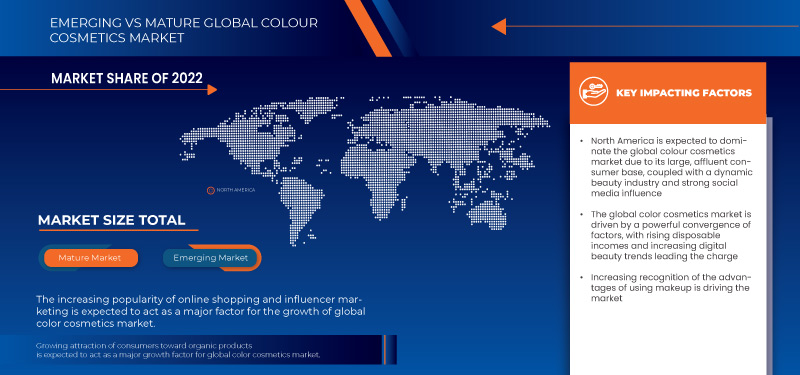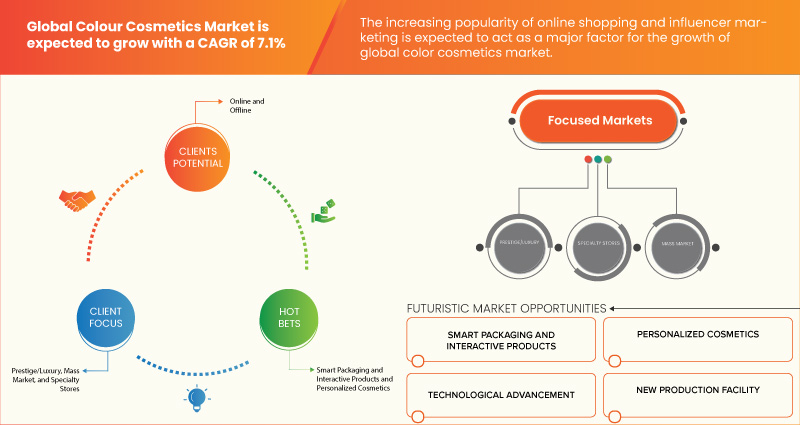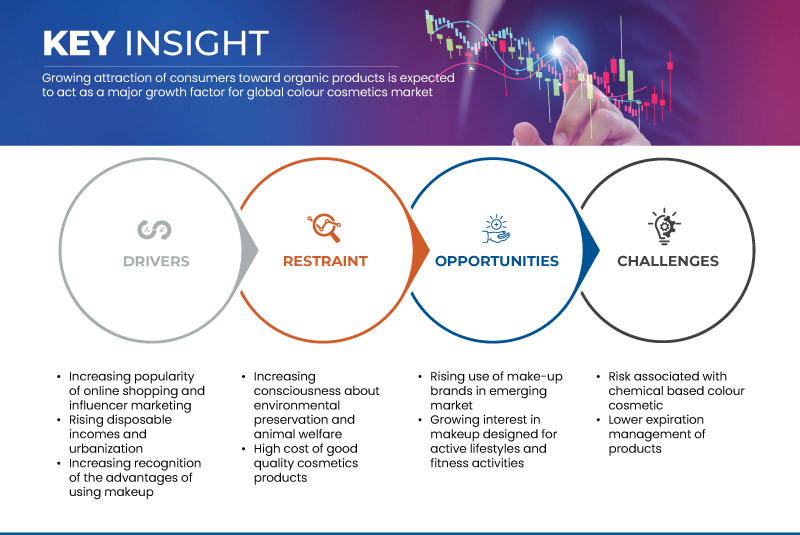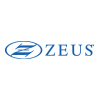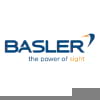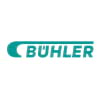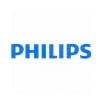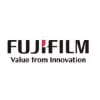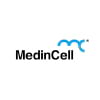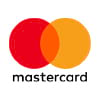TABLE 1 REVENUE OF BRANDS (USD BILLION)
TABLE 2 IMPORT-EXPORT DATA OF SOUTH KOREA (USD MILLION)
TABLE 3 AVERAGE PRICES OF MAKE-UP PRODUCTS (USD)
TABLE 4 AVERAGE PRICES OF LIPS PRODUCTS (USD)
TABLE 5 AVERAGE PRICES OF NAILS PRODUCTS (USD)
TABLE 6 OTHER REGULATIONS RELATED TO COLOUR COSMETICS
TABLE 7 GLOBAL COLOUR COSMETICS MARKET, BY PRODUCT, 2022-2031 (USD MILLION)
TABLE 8 GLOBAL FACIAL MAKEUP IN COLOUR COSMETICS MARKET, BY REGION, 2022-2031 (USD MILLION)
TABLE 9 GLOBAL FACIAL MAKEUP IN COLOUR COSMETICS MARKET, BY TYPE, 2022-2031 (USD MILLION)
TABLE 10 GLOBAL EYE MAKEUP IN COLOUR COSMETICS MARKET, BY REGION, 2022-2031 (USD MILLION)
TABLE 11 GLOBAL LIP PRODUCTS IN COLOUR COSMETICS MARKET, BY REGION, 2022-2031 (USD MILLION)
TABLE 12 GLOBAL NAIL PRODUCTS IN COLOUR COSMETICS MARKET, BY REGION, 2022-2031 (USD MILLION)
TABLE 13 GLOBAL HAIR PRODUCTS IN COLOUR COSMETICS MARKET, BY REGION, 2022-2031 (USD MILLION)
TABLE 14 GLOBAL OTHERS IN COLOUR COSMETICS MARKET, BY REGION, 2022-2031 (USD MILLION)
TABLE 15 GLOBAL COLOUR COSMETICS MARKET, BY PIGMENT TYPE, 2022-2031 (USD MILLION)
TABLE 16 GLOBAL INORGANIC PIGMENTS IN COLOUR COSMETICS MARKET, BY REGION, 2022-2031 (USD MILLION)
TABLE 17 GLOBAL INORGANIC PIGMENTS IN COLOUR COSMETICS MARKET, BY TYPE, 2022-2031 (USD MILLION)
TABLE 18 GLOBAL ORGANIC PIGMENTS IN COLOUR COSMETICS MARKET, BY REGION, 2022-2031 (USD MILLION)
TABLE 19 GLOBAL ORGANIC PIGMENTS IN COLOUR COSMETICS MARKET, BY TYPE, 2022-2031 (USD MILLION)
TABLE 20 GLOBAL COLOUR COSMETICS MARKET, BY TARGET MARKET, 2022-2031 (USD MILLION)
TABLE 21 GLOBAL MASS PRODUCTS IN COLOUR COSMETICS MARKET, BY REGION, 2022-2031 (USD MILLION)
TABLE 22 GLOBAL PRESTIGE PRODUCTS IN COLOUR COSMETICS MARKET, BY REGION, 2022-2031 (USD MILLION)
TABLE 23 GLOBAL COLOUR COSMETICS MARKET, BY PACKAGING, 2022-2031 (USD MILLION)
TABLE 24 GLOBAL BOTTLES & JARS IN COLOUR COSMETICS MARKET, BY REGION, 2022-2031 (USD MILLION)
TABLE 25 GLOBAL TUBES IN COLOUR COSMETICS MARKET, BY REGION, 2022-2031 (USD MILLION)
TABLE 26 GLOBAL CONTAINERS IN COLOUR COSMETICS MARKET, BY REGION, 2022-2031 (USD MILLION)
TABLE 27 GLOBAL POUCHES IN COLOUR COSMETICS MARKET, BY REGION, 2022-2031 (USD MILLION)
TABLE 28 GLOBAL DISPENSER IN COLOUR COSMETICS MARKET, BY REGION, 2022-2031 (USD MILLION)
TABLE 29 GLOBAL STICKS IN COLOUR COSMETICS MARKET, BY REGION, 2022-2031 (USD MILLION)
TABLE 30 GLOBAL OTHERS IN COLOUR COSMETICS MARKET, BY REGION, 2022-2031 (USD MILLION)
TABLE 31 GLOBAL COLOUR COSMETICS MARKET, BY FORM, 2022-2031 (USD MILLION)
TABLE 32 GLOBAL LIQUID IN COLOUR COSMETICS MARKET, BY REGION, 2022-2031 (USD MILLION))
TABLE 33 GLOBAL POWDER IN COLOUR COSMETICS MARKET, BY REGION, 2022-2031 (USD MILLION)
TABLE 34 GLOBAL SPRAY IN COLOUR COSMETICS MARKET, BY REGION, 2022-2031 (USD MILLION)
TABLE 35 GLOBAL COLOUR COSMETICS MARKET, BY DISTRIBUTION CHANNEL, 2022-2031 (USD MILLION)
TABLE 36 GLOBAL E-COMMERCE IN COLOUR COSMETICS MARKET, BY REGION, 2022-2031 (USD MILLION)
TABLE 37 GLOBAL SUPERMARKET/HYPERMARKETS IN COLOUR COSMETICS MARKET, BY REGION, 2022-2031 (USD MILLION)
TABLE 38 GLOBAL DIRECT SALES/B2B IN COLOUR COSMETICS MARKET, BY REGION, 2022-2031 (USD MILLION)
TABLE 39 GLOBAL SPECIALITY STORES IN COLOUR COSMETICS MARKET, BY REGION, 2022-2031 (USD MILLION)
TABLE 40 GLOBAL OTHERS IN COLOUR COSMETICS MARKET, BY REGION, 2022-2031 (USD MILLION)
TABLE 41 GLOBAL COLOUR COSMETICS MARKET, BY END-USER, 2022-2031 (USD MILLION)
TABLE 42 GLOBAL PARLOUR IN COLOUR COSMETICS MARKET, BY REGION, 2022-2031 (USD MILLION)
TABLE 43 GLOBAL HOUSEHOLD IN COLOUR COSMETICS MARKET, BY REGION, 2022-2031 (USD MILLION)
TABLE 44 GLOBAL MODELLING & FASHION INDUSTRIES IN COLOUR COSMETICS MARKET, BY REGION, 2022-2031 (USD MILLION)
TABLE 45 GLOBAL MEDIA HOUSES IN COLOUR COSMETICS MARKET, BY REGION, 2022-2031 (USD MILLION)
TABLE 46 GLOBAL OTHERS IN COLOUR COSMETICS MARKET, BY REGION, 2022-2031 (USD MILLION)
TABLE 47 GLOBAL COLOUR COSMETICS MARKET, BY REGION, 2022-2031 (USD MILLION)
TABLE 48 NORTH AMERICA COLOUR COSMETICS MARKET, BY COUNTRY, 2022-2031 (USD MILLION)
TABLE 49 NORTH AMERICA COLOUR COSMETICS MARKET, BY PRODUCT, 2022-2031 (USD MILLION)
TABLE 50 NORTH AMERICA FACIAL MAKEUP IN COLOUR COSMETICS MARKET, BY TYPE, 2022-2031 (USD MILLION)
TABLE 51 NORTH AMERICA COLOUR COSMETICS MARKET, BY PIGMENT TYPE, 2022-2031 (USD MILLION)
TABLE 52 NORTH AMERICA INORGANIC PIGMENTS IN COLOUR COSMETICS MARKET, BY TYPE, 2022-2031 (USD MILLION)
TABLE 53 NORTH AMERICA ORGANIC PIGMENTS IN COLOUR COSMETICS MARKET, BY TYPE, 2022-2031 (USD MILLION)
TABLE 54 NORTH AMERICA COLOUR COSMETICS MARKET, BY TARGET MARKET, 2022-2031 (USD MILLION)
TABLE 55 NORTH AMERICA COLOUR COSMETICS MARKET, BY PACKAGING, 2022-2031 (USD MILLION)
TABLE 56 NORTH AMERICA COLOUR COSMETICS MARKET, BY FORM, 2022-2031 (USD MILLION)
TABLE 57 NORTH AMERICA COLOUR COSMETICS MARKET, BY DISTRIBUTION CHANNEL, 2022-2031 (USD MILLION)
TABLE 58 NORTH AMERICA COLOUR COSMETICS MARKET, BY END-USER, 2022-2031 (USD MILLION)
TABLE 59 U.S. COLOUR COSMETICS MARKET, BY PRODUCT, 2022-2031 (USD MILLION)
TABLE 60 U.S. FACIAL MAKEUP IN COLOUR COSMETICS MARKET, BY TYPE, 2022-2031 (USD MILLION)
TABLE 61 U.S. COLOUR COSMETICS MARKET, BY PIGMENT TYPE, 2022-2031 (USD MILLION)
TABLE 62 U.S. INORGANIC PIGMENTS IN COLOUR COSMETICS MARKET, BY TYPE, 2022-2031 (USD MILLION)
TABLE 63 U.S. ORGANIC PIGMENTS IN COLOUR COSMETICS MARKET, BY TYPE, 2022-2031 (USD MILLION)
TABLE 64 U.S. COLOUR COSMETICS MARKET, BY TARGET MARKET, 2022-2031 (USD MILLION)
TABLE 65 U.S. COLOUR COSMETICS MARKET, BY PACKAGING, 2022-2031 (USD MILLION)
TABLE 66 U.S. COLOUR COSMETICS MARKET, BY FORM, 2022-2031 (USD MILLION)
TABLE 67 U.S. COLOUR COSMETICS MARKET, BY DISTRIBUTION CHANNEL, 2022-2031 (USD MILLION)
TABLE 68 U.S. COLOUR COSMETICS MARKET, BY END-USER, 2022-2031 (USD MILLION)
TABLE 69 CANADA COLOUR COSMETICS MARKET, BY PRODUCT, 2022-2031 (USD MILLION)
TABLE 70 CANADA FACIAL MAKEUP IN COLOUR COSMETICS MARKET, BY TYPE, 2022-2031 (USD MILLION)
TABLE 71 CANADA COLOUR COSMETICS MARKET, BY PIGMENT TYPE, 2022-2031 (USD MILLION)
TABLE 72 CANADA INORGANIC PIGMENTS IN COLOUR COSMETICS MARKET, BY TYPE, 2022-2031 (USD MILLION)
TABLE 73 CANADA ORGANIC PIGMENTS IN COLOUR COSMETICS MARKET, BY TYPE, 2022-2031 (USD MILLION)
TABLE 74 CANADA COLOUR COSMETICS MARKET, BY TARGET MARKET, 2022-2031 (USD MILLION)
TABLE 75 CANADA COLOUR COSMETICS MARKET, BY PACKAGING, 2022-2031 (USD MILLION)
TABLE 76 CANADA COLOUR COSMETICS MARKET, BY FORM, 2022-2031 (USD MILLION)
TABLE 77 CANADA COLOUR COSMETICS MARKET, BY DISTRIBUTION CHANNEL, 2022-2031 (USD MILLION)
TABLE 78 CANADA COLOUR COSMETICS MARKET, BY END-USER, 2022-2031 (USD MILLION)
TABLE 79 MEXICO COLOUR COSMETICS MARKET, BY PRODUCT, 2022-2031 (USD MILLION)
TABLE 80 MEXICO FACIAL MAKEUP IN COLOUR COSMETICS MARKET, BY TYPE, 2022-2031 (USD MILLION)
TABLE 81 MEXICO COLOUR COSMETICS MARKET, BY PIGMENT TYPE, 2022-2031 (USD MILLION)
TABLE 82 MEXICO INORGANIC PIGMENTS IN COLOUR COSMETICS MARKET, BY TYPE, 2022-2031 (USD MILLION)
TABLE 83 MEXICO ORGANIC PIGMENTS IN COLOUR COSMETICS MARKET, BY TYPE, 2022-2031 (USD MILLION)
TABLE 84 MEXICO COLOUR COSMETICS MARKET, BY TARGET MARKET, 2022-2031 (USD MILLION)
TABLE 85 MEXICO COLOUR COSMETICS MARKET, BY PACKAGING, 2022-2031 (USD MILLION)
TABLE 86 MEXICO COLOUR COSMETICS MARKET, BY FORM, 2022-2031 (USD MILLION)
TABLE 87 MEXICO COLOUR COSMETICS MARKET, BY DISTRIBUTION CHANNEL, 2022-2031 (USD MILLION)
TABLE 88 MEXICO COLOUR COSMETICS MARKET, BY END-USER, 2022-2031 (USD MILLION)
TABLE 89 ASIA-PACIFIC COLOUR COSMETICS MARKET, BY COUNTRY, 2022-2031 (USD MILLION)
TABLE 90 ASIA-PACIFIC COLOUR COSMETICS MARKET, BY PRODUCT, 2022-2031 (USD MILLION)
TABLE 91 ASIA-PACIFIC FACIAL MAKEUP IN COLOUR COSMETICS MARKET, BY TYPE, 2022-2031 (USD MILLION)
TABLE 92 ASIA-PACIFIC COLOUR COSMETICS MARKET, BY PIGMENT TYPE, 2022-2031 (USD MILLION)
TABLE 93 ASIA-PACIFIC INORGANIC PIGMENTS IN COLOUR COSMETICS MARKET, BY TYPE, 2022-2031 (USD MILLION)
TABLE 94 ASIA-PACIFIC ORGANIC PIGMENTS IN COLOUR COSMETICS MARKET, BY TYPE, 2022-2031 (USD MILLION)
TABLE 95 ASIA-PACIFIC COLOUR COSMETICS MARKET, BY TARGET MARKET, 2022-2031 (USD MILLION)
TABLE 96 ASIA-PACIFIC COLOUR COSMETICS MARKET, BY PACKAGING, 2022-2031 (USD MILLION)
TABLE 97 ASIA-PACIFIC COLOUR COSMETICS MARKET, BY FORM, 2022-2031 (USD MILLION)
TABLE 98 ASIA-PACIFIC COLOUR COSMETICS MARKET, BY DISTRIBUTION CHANNEL, 2022-2031 (USD MILLION)
TABLE 99 ASIA-PACIFIC COLOUR COSMETICS MARKET, BY END-USER, 2022-2031 (USD MILLION)
TABLE 100 CHINA COLOUR COSMETICS MARKET, BY PRODUCT, 2022-2031 (USD MILLION)
TABLE 101 CHINA FACIAL MAKEUP IN COLOUR COSMETICS MARKET, BY TYPE, 2022-2031 (USD MILLION)
TABLE 102 CHINA COLOUR COSMETICS MARKET, BY PIGMENT TYPE, 2022-2031 (USD MILLION)
TABLE 103 CHINA INORGANIC PIGMENTS IN COLOUR COSMETICS MARKET, BY TYPE, 2022-2031 (USD MILLION)
TABLE 104 CHINA ORGANIC PIGMENTS IN COLOUR COSMETICS MARKET, BY TYPE, 2022-2031 (USD MILLION)
TABLE 105 CHINA COLOUR COSMETICS MARKET, BY TARGET MARKET, 2022-2031 (USD MILLION)
TABLE 106 CHINA COLOUR COSMETICS MARKET, BY PACKAGING, 2022-2031 (USD MILLION)
TABLE 107 CHINA COLOUR COSMETICS MARKET, BY FORM, 2022-2031 (USD MILLION)
TABLE 108 CHINA COLOUR COSMETICS MARKET, BY DISTRIBUTION CHANNEL, 2022-2031 (USD MILLION)
TABLE 109 CHINA COLOUR COSMETICS MARKET, BY END-USER, 2022-2031 (USD MILLION)
TABLE 110 JAPAN COLOUR COSMETICS MARKET, BY PRODUCT, 2022-2031 (USD MILLION)
TABLE 111 JAPAN FACIAL MAKEUP IN COLOUR COSMETICS MARKET, BY TYPE, 2022-2031 (USD MILLION)
TABLE 112 JAPAN COLOUR COSMETICS MARKET, BY PIGMENT TYPE, 2022-2031 (USD MILLION)
TABLE 113 JAPAN INORGANIC PIGMENTS IN COLOUR COSMETICS MARKET, BY TYPE, 2022-2031 (USD MILLION)
TABLE 114 JAPAN ORGANIC PIGMENTS IN COLOUR COSMETICS MARKET, BY TYPE, 2022-2031 (USD MILLION)
TABLE 115 JAPAN COLOUR COSMETICS MARKET, BY TARGET MARKET, 2022-2031 (USD MILLION)
TABLE 116 JAPAN COLOUR COSMETICS MARKET, BY PACKAGING, 2022-2031 (USD MILLION)
TABLE 117 JAPAN COLOUR COSMETICS MARKET, BY FORM, 2022-2031 (USD MILLION)
TABLE 118 JAPAN COLOUR COSMETICS MARKET, BY DISTRIBUTION CHANNEL, 2022-2031 (USD MILLION)
TABLE 119 JAPAN COLOUR COSMETICS MARKET, BY END-USER, 2022-2031 (USD MILLION)
TABLE 120 SOUTH KOREA COLOUR COSMETICS MARKET, BY PRODUCT, 2022-2031 (USD MILLION)
TABLE 121 SOUTH KOREA FACIAL MAKEUP IN COLOUR COSMETICS MARKET, BY TYPE, 2022-2031 (USD MILLION)
TABLE 122 SOUTH KOREA COLOUR COSMETICS MARKET, BY PIGMENT TYPE, 2022-2031 (USD MILLION)
TABLE 123 SOUTH KOREA INORGANIC PIGMENTS IN COLOUR COSMETICS MARKET, BY TYPE, 2022-2031 (USD MILLION)
TABLE 124 SOUTH KOREA ORGANIC PIGMENTS IN COLOUR COSMETICS MARKET, BY TYPE, 2022-2031 (USD MILLION)
TABLE 125 SOUTH KOREA COLOUR COSMETICS MARKET, BY TARGET MARKET, 2022-2031 (USD MILLION)
TABLE 126 SOUTH KOREA COLOUR COSMETICS MARKET, BY PACKAGING, 2022-2031 (USD MILLION)
TABLE 127 SOUTH KOREA COLOUR COSMETICS MARKET, BY FORM, 2022-2031 (USD MILLION)
TABLE 128 SOUTH KOREA COLOUR COSMETICS MARKET, BY DISTRIBUTION CHANNEL, 2022-2031 (USD MILLION)
TABLE 129 SOUTH KOREA COLOUR COSMETICS MARKET, BY END-USER, 2022-2031 (USD MILLION)
TABLE 130 INDIA COLOUR COSMETICS MARKET, BY PRODUCT, 2022-2031 (USD MILLION)
TABLE 131 INDIA FACIAL MAKEUP IN COLOUR COSMETICS MARKET, BY TYPE, 2022-2031 (USD MILLION)
TABLE 132 INDIA COLOUR COSMETICS MARKET, BY PIGMENT TYPE, 2022-2031 (USD MILLION)
TABLE 133 INDIA INORGANIC PIGMENTS IN COLOUR COSMETICS MARKET, BY TYPE, 2022-2031 (USD MILLION)
TABLE 134 INDIA ORGANIC PIGMENTS IN COLOUR COSMETICS MARKET, BY TYPE, 2022-2031 (USD MILLION)
TABLE 135 INDIA COLOUR COSMETICS MARKET, BY TARGET MARKET, 2022-2031 (USD MILLION)
TABLE 136 INDIA COLOUR COSMETICS MARKET, BY PACKAGING, 2022-2031 (USD MILLION)
TABLE 137 INDIA COLOUR COSMETICS MARKET, BY FORM, 2022-2031 (USD MILLION)
TABLE 138 INDIA COLOUR COSMETICS MARKET, BY DISTRIBUTION CHANNEL, 2022-2031 (USD MILLION)
TABLE 139 INDIA COLOUR COSMETICS MARKET, BY END-USER, 2022-2031 (USD MILLION)
TABLE 140 MALAYSIA COLOUR COSMETICS MARKET, BY PRODUCT, 2022-2031 (USD MILLION)
TABLE 141 MALAYSIA FACIAL MAKEUP IN COLOUR COSMETICS MARKET, BY TYPE, 2022-2031 (USD MILLION)
TABLE 142 MALAYSIA COLOUR COSMETICS MARKET, BY PIGMENT TYPE, 2022-2031 (USD MILLION)
TABLE 143 MALAYSIA INORGANIC PIGMENTS IN COLOUR COSMETICS MARKET, BY TYPE, 2022-2031 (USD MILLION)
TABLE 144 MALAYSIA ORGANIC PIGMENTS IN COLOUR COSMETICS MARKET, BY TYPE, 2022-2031 (USD MILLION)
TABLE 145 MALAYSIA COLOUR COSMETICS MARKET, BY TARGET MARKET, 2022-2031 (USD MILLION)
TABLE 146 MALAYSIA COLOUR COSMETICS MARKET, BY PACKAGING, 2022-2031 (USD MILLION)
TABLE 147 MALAYSIA COLOUR COSMETICS MARKET, BY FORM, 2022-2031 (USD MILLION)
TABLE 148 MALAYSIA COLOUR COSMETICS MARKET, BY DISTRIBUTION CHANNEL, 2022-2031 (USD MILLION)
TABLE 149 MALAYSIA COLOUR COSMETICS MARKET, BY END-USER, 2022-2031 (USD MILLION)
TABLE 150 AUSTRALIA & NEW ZEALAND COLOUR COSMETICS MARKET, BY PRODUCT, 2022-2031 (USD MILLION)
TABLE 151 AUSTRALIA & NEW ZEALAND FACIAL MAKEUP IN COLOUR COSMETICS MARKET, BY TYPE, 2022-2031 (USD MILLION)
TABLE 152 AUSTRALIA & NEW ZEALAND COLOUR COSMETICS MARKET, BY PIGMENT TYPE, 2022-2031 (USD MILLION)
TABLE 153 AUSTRALIA & NEW ZEALAND INORGANIC PIGMENTS IN COLOUR COSMETICS MARKET, BY TYPE, 2022-2031 (USD MILLION)
TABLE 154 AUSTRALIA & NEW ZEALAND ORGANIC PIGMENTS IN COLOUR COSMETICS MARKET, BY TYPE, 2022-2031 (USD MILLION)
TABLE 155 AUSTRALIA & NEW ZEALAND COLOUR COSMETICS MARKET, BY TARGET MARKET, 2022-2031 (USD MILLION)
TABLE 156 AUSTRALIA & NEW ZEALAND COLOUR COSMETICS MARKET, BY PACKAGING, 2022-2031 (USD MILLION)
TABLE 157 AUSTRALIA & NEW ZEALAND COLOUR COSMETICS MARKET, BY FORM, 2022-2031 (USD MILLION)
TABLE 158 AUSTRALIA & NEW ZEALAND COLOUR COSMETICS MARKET, BY DISTRIBUTION CHANNEL, 2022-2031 (USD MILLION)
TABLE 159 AUSTRALIA & NEW ZEALAND COLOUR COSMETICS MARKET, BY END-USER, 2022-2031 (USD MILLION)
TABLE 160 SINGAPORE COLOUR COSMETICS MARKET, BY PRODUCT, 2022-2031 (USD MILLION)
TABLE 161 SINGAPORE FACIAL MAKEUP IN COLOUR COSMETICS MARKET, BY TYPE, 2022-2031 (USD MILLION)
TABLE 162 SINGAPORE COLOUR COSMETICS MARKET, BY PIGMENT TYPE, 2022-2031 (USD MILLION)
TABLE 163 SINGAPORE INORGANIC PIGMENTS IN COLOUR COSMETICS MARKET, BY TYPE, 2022-2031 (USD MILLION)
TABLE 164 SINGAPORE ORGANIC PIGMENTS IN COLOUR COSMETICS MARKET, BY TYPE, 2022-2031 (USD MILLION)
TABLE 165 SINGAPORE COLOUR COSMETICS MARKET, BY TARGET MARKET, 2022-2031 (USD MILLION)
TABLE 166 SINGAPORE COLOUR COSMETICS MARKET, BY PACKAGING, 2022-2031 (USD MILLION)
TABLE 167 SINGAPORE COLOUR COSMETICS MARKET, BY FORM, 2022-2031 (USD MILLION)
TABLE 168 SINGAPORE COLOUR COSMETICS MARKET, BY DISTRIBUTION CHANNEL, 2022-2031 (USD MILLION)
TABLE 169 SINGAPORE COLOUR COSMETICS MARKET, BY END-USER, 2022-2031 (USD MILLION)
TABLE 170 INDONESIA COLOUR COSMETICS MARKET, BY PRODUCT, 2022-2031 (USD MILLION)
TABLE 171 INDONESIA FACIAL MAKEUP IN COLOUR COSMETICS MARKET, BY TYPE, 2022-2031 (USD MILLION)
TABLE 172 INDONESIA COLOUR COSMETICS MARKET, BY PIGMENT TYPE, 2022-2031 (USD MILLION)
TABLE 173 INDONESIA INORGANIC PIGMENTS IN COLOUR COSMETICS MARKET, BY TYPE, 2022-2031 (USD MILLION)
TABLE 174 INDONESIA ORGANIC PIGMENTS IN COLOUR COSMETICS MARKET, BY TYPE, 2022-2031 (USD MILLION)
TABLE 175 INDONESIA COLOUR COSMETICS MARKET, BY TARGET MARKET, 2022-2031 (USD MILLION)
TABLE 176 INDONESIA COLOUR COSMETICS MARKET, BY PACKAGING, 2022-2031 (USD MILLION)
TABLE 177 INDONESIA COLOUR COSMETICS MARKET, BY FORM, 2022-2031 (USD MILLION)
TABLE 178 INDONESIA COLOUR COSMETICS MARKET, BY DISTRIBUTION CHANNEL, 2022-2031 (USD MILLION)
TABLE 179 INDONESIA COLOUR COSMETICS MARKET, BY END-USER, 2022-2031 (USD MILLION)
TABLE 180 THAILAND COLOUR COSMETICS MARKET, BY PRODUCT, 2022-2031 (USD MILLION)
TABLE 181 THAILAND FACIAL MAKEUP IN COLOUR COSMETICS MARKET, BY TYPE, 2022-2031 (USD MILLION)
TABLE 182 THAILAND COLOUR COSMETICS MARKET, BY PIGMENT TYPE, 2022-2031 (USD MILLION)
TABLE 183 THAILAND INORGANIC PIGMENTS IN COLOUR COSMETICS MARKET, BY TYPE, 2022-2031 (USD MILLION)
TABLE 184 THAILAND ORGANIC PIGMENTS IN COLOUR COSMETICS MARKET, BY TYPE, 2022-2031 (USD MILLION)
TABLE 185 THAILAND COLOUR COSMETICS MARKET, BY TARGET MARKET, 2022-2031 (USD MILLION)
TABLE 186 THAILAND COLOUR COSMETICS MARKET, BY PACKAGING, 2022-2031 (USD MILLION)
TABLE 187 THAILAND COLOUR COSMETICS MARKET, BY FORM, 2022-2031 (USD MILLION)
TABLE 188 THAILAND COLOUR COSMETICS MARKET, BY DISTRIBUTION CHANNEL, 2022-2031 (USD MILLION)
TABLE 189 THAILAND COLOUR COSMETICS MARKET, BY END-USER, 2022-2031 (USD MILLION)
TABLE 190 PHILIPPINES COLOUR COSMETICS MARKET, BY PRODUCT, 2022-2031 (USD MILLION)
TABLE 191 PHILIPPINES FACIAL MAKEUP IN COLOUR COSMETICS MARKET, BY TYPE, 2022-2031 (USD MILLION)
TABLE 192 PHILIPPINES COLOUR COSMETICS MARKET, BY PIGMENT TYPE, 2022-2031 (USD MILLION)
TABLE 193 PHILIPPINES INORGANIC PIGMENTS IN COLOUR COSMETICS MARKET, BY TYPE, 2022-2031 (USD MILLION)
TABLE 194 PHILIPPINES ORGANIC PIGMENTS IN COLOUR COSMETICS MARKET, BY TYPE, 2022-2031 (USD MILLION)
TABLE 195 PHILIPPINES COLOUR COSMETICS MARKET, BY TARGET MARKET, 2022-2031 (USD MILLION)
TABLE 196 PHILIPPINES COLOUR COSMETICS MARKET, BY PACKAGING, 2022-2031 (USD MILLION)
TABLE 197 PHILIPPINES COLOUR COSMETICS MARKET, BY FORM, 2022-2031 (USD MILLION)
TABLE 198 PHILIPPINES COLOUR COSMETICS MARKET, BY DISTRIBUTION CHANNEL, 2022-2031 (USD MILLION)
TABLE 199 PHILIPPINES COLOUR COSMETICS MARKET, BY END-USER, 2022-2031 (USD MILLION)
TABLE 200 REST OF ASIA-PACIFIC COLOUR COSMETICS MARKET, BY PRODUCT, 2022-2031 (USD MILLION)
TABLE 201 EUROPE COLOUR COSMETICS MARKET, BY COUNTRY, 2022-2031 (USD MILLION)
TABLE 202 EUROPE COLOUR COSMETICS MARKET, BY PRODUCT, 2022-2031 (USD MILLION)
TABLE 203 EUROPE FACIAL MAKEUP IN COLOUR COSMETICS MARKET, BY TYPE, 2022-2031 (USD MILLION)
TABLE 204 EUROPE COLOUR COSMETICS MARKET, BY PIGMENT TYPE, 2022-2031 (USD MILLION)
TABLE 205 EUROPE INORGANIC PIGMENTS IN COLOUR COSMETICS MARKET, BY TYPE, 2022-2031 (USD MILLION)
TABLE 206 EUROPE ORGANIC PIGMENTS IN COLOUR COSMETICS MARKET, BY TYPE, 2022-2031 (USD MILLION)
TABLE 207 EUROPE COLOUR COSMETICS MARKET, BY TARGET MARKET, 2022-2031 (USD MILLION)
TABLE 208 EUROPE COLOUR COSMETICS MARKET, BY PACKAGING, 2022-2031 (USD MILLION)
TABLE 209 EUROPE COLOUR COSMETICS MARKET, BY FORM, 2022-2031 (USD MILLION)
TABLE 210 EUROPE COLOUR COSMETICS MARKET, BY DISTRIBUTION CHANNEL, 2022-2031 (USD MILLION)
TABLE 211 EUROPE COLOUR COSMETICS MARKET, BY END-USER, 2022-2031 (USD MILLION)
TABLE 212 GERMANY COLOUR COSMETICS MARKET, BY PRODUCT, 2022-2031 (USD MILLION)
TABLE 213 GERMANY FACIAL MAKEUP IN COLOUR COSMETICS MARKET, BY TYPE, 2022-2031 (USD MILLION)
TABLE 214 GERMANY COLOUR COSMETICS MARKET, BY PIGMENT TYPE, 2022-2031 (USD MILLION)
TABLE 215 GERMANY INORGANIC PIGMENTS IN COLOUR COSMETICS MARKET, BY TYPE, 2022-2031 (USD MILLION)
TABLE 216 GERMANY ORGANIC PIGMENTS IN COLOUR COSMETICS MARKET, BY TYPE, 2022-2031 (USD MILLION)
TABLE 217 GERMANY COLOUR COSMETICS MARKET, BY TARGET MARKET, 2022-2031 (USD MILLION)
TABLE 218 GERMANY COLOUR COSMETICS MARKET, BY PACKAGING, 2022-2031 (USD MILLION)
TABLE 219 GERMANY COLOUR COSMETICS MARKET, BY FORM, 2022-2031 (USD MILLION)
TABLE 220 GERMANY COLOUR COSMETICS MARKET, BY DISTRIBUTION CHANNEL, 2022-2031 (USD MILLION)
TABLE 221 GERMANY COLOUR COSMETICS MARKET, BY END-USER, 2022-2031 (USD MILLION)
TABLE 222 FRANCE COLOUR COSMETICS MARKET, BY PRODUCT, 2022-2031 (USD MILLION)
TABLE 223 FRANCE FACIAL MAKEUP IN COLOUR COSMETICS MARKET, BY TYPE, 2022-2031 (USD MILLION)
TABLE 224 FRANCE COLOUR COSMETICS MARKET, BY PIGMENT TYPE, 2022-2031 (USD MILLION)
TABLE 225 FRANCE INORGANIC PIGMENTS IN COLOUR COSMETICS MARKET, BY TYPE, 2022-2031 (USD MILLION)
TABLE 226 FRANCE ORGANIC PIGMENTS IN COLOUR COSMETICS MARKET, BY TYPE, 2022-2031 (USD MILLION)
TABLE 227 FRANCE COLOUR COSMETICS MARKET, BY TARGET MARKET, 2022-2031 (USD MILLION)
TABLE 228 FRANCE COLOUR COSMETICS MARKET, BY PACKAGING, 2022-2031 (USD MILLION)
TABLE 229 FRANCE COLOUR COSMETICS MARKET, BY FORM, 2022-2031 (USD MILLION)
TABLE 230 FRANCE COLOUR COSMETICS MARKET, BY DISTRIBUTION CHANNEL, 2022-2031 (USD MILLION)
TABLE 231 FRANCE COLOUR COSMETICS MARKET, BY END-USER, 2022-2031 (USD MILLION)
TABLE 232 U.K. COLOUR COSMETICS MARKET, BY PRODUCT, 2022-2031 (USD MILLION)
TABLE 233 U.K. FACIAL MAKEUP IN COLOUR COSMETICS MARKET, BY TYPE, 2022-2031 (USD MILLION)
TABLE 234 U.K. COLOUR COSMETICS MARKET, BY PIGMENT TYPE, 2022-2031 (USD MILLION)
TABLE 235 U.K. INORGANIC PIGMENTS IN COLOUR COSMETICS MARKET, BY TYPE, 2022-2031 (USD MILLION)
TABLE 236 U.K. ORGANIC PIGMENTS IN COLOUR COSMETICS MARKET, BY TYPE, 2022-2031 (USD MILLION)
TABLE 237 U.K. COLOUR COSMETICS MARKET, BY TARGET MARKET, 2022-2031 (USD MILLION)
TABLE 238 U.K. COLOUR COSMETICS MARKET, BY PACKAGING, 2022-2031 (USD MILLION)
TABLE 239 U.K. COLOUR COSMETICS MARKET, BY FORM, 2022-2031 (USD MILLION)
TABLE 240 U.K. COLOUR COSMETICS MARKET, BY DISTRIBUTION CHANNEL, 2022-2031 (USD MILLION)
TABLE 241 U.K. COLOUR COSMETICS MARKET, BY END-USER, 2022-2031 (USD MILLION)
TABLE 242 ITALY COLOUR COSMETICS MARKET, BY PRODUCT, 2022-2031 (USD MILLION)
TABLE 243 ITALY FACIAL MAKEUP IN COLOUR COSMETICS MARKET, BY TYPE, 2022-2031 (USD MILLION)
TABLE 244 ITALY COLOUR COSMETICS MARKET, BY PIGMENT TYPE, 2022-2031 (USD MILLION)
TABLE 245 ITALY INORGANIC PIGMENTS IN COLOUR COSMETICS MARKET, BY TYPE, 2022-2031 (USD MILLION)
TABLE 246 ITALY ORGANIC PIGMENTS IN COLOUR COSMETICS MARKET, BY TYPE, 2022-2031 (USD MILLION)
TABLE 247 ITALY COLOUR COSMETICS MARKET, BY TARGET MARKET, 2022-2031 (USD MILLION)
TABLE 248 ITALY COLOUR COSMETICS MARKET, BY PACKAGING, 2022-2031 (USD MILLION)
TABLE 249 ITALY COLOUR COSMETICS MARKET, BY FORM, 2022-2031 (USD MILLION)
TABLE 250 ITALY COLOUR COSMETICS MARKET, BY DISTRIBUTION CHANNEL, 2022-2031 (USD MILLION)
TABLE 251 ITALY COLOUR COSMETICS MARKET, BY END-USER, 2022-2031 (USD MILLION)
TABLE 252 SPAIN COLOUR COSMETICS MARKET, BY PRODUCT, 2022-2031 (USD MILLION)
TABLE 253 SPAIN FACIAL MAKEUP IN COLOUR COSMETICS MARKET, BY TYPE, 2022-2031 (USD MILLION)
TABLE 254 SPAIN COLOUR COSMETICS MARKET, BY PIGMENT TYPE, 2022-2031 (USD MILLION)
TABLE 255 SPAIN INORGANIC PIGMENTS IN COLOUR COSMETICS MARKET, BY TYPE, 2022-2031 (USD MILLION)
TABLE 256 SPAIN ORGANIC PIGMENTS IN COLOUR COSMETICS MARKET, BY TYPE, 2022-2031 (USD MILLION)
TABLE 257 SPAIN COLOUR COSMETICS MARKET, BY TARGET MARKET, 2022-2031 (USD MILLION)
TABLE 258 SPAIN COLOUR COSMETICS MARKET, BY PACKAGING, 2022-2031 (USD MILLION)
TABLE 259 SPAIN COLOUR COSMETICS MARKET, BY FORM, 2022-2031 (USD MILLION)
TABLE 260 SPAIN COLOUR COSMETICS MARKET, BY DISTRIBUTION CHANNEL, 2022-2031 (USD MILLION)
TABLE 261 SPAIN COLOUR COSMETICS MARKET, BY END-USER, 2022-2031 (USD MILLION)
TABLE 262 RUSSIA COLOUR COSMETICS MARKET, BY PRODUCT, 2022-2031 (USD MILLION)
TABLE 263 RUSSIA FACIAL MAKEUP IN COLOUR COSMETICS MARKET, BY TYPE, 2022-2031 (USD MILLION)
TABLE 264 RUSSIA COLOUR COSMETICS MARKET, BY PIGMENT TYPE, 2022-2031 (USD MILLION)
TABLE 265 RUSSIA INORGANIC PIGMENTS IN COLOUR COSMETICS MARKET, BY TYPE, 2022-2031 (USD MILLION)
TABLE 266 RUSSIA ORGANIC PIGMENTS IN COLOUR COSMETICS MARKET, BY TYPE, 2022-2031 (USD MILLION)
TABLE 267 RUSSIA COLOUR COSMETICS MARKET, BY TARGET MARKET, 2022-2031 (USD MILLION)
TABLE 268 RUSSIA COLOUR COSMETICS MARKET, BY PACKAGING, 2022-2031 (USD MILLION)
TABLE 269 RUSSIA COLOUR COSMETICS MARKET, BY FORM, 2022-2031 (USD MILLION)
TABLE 270 RUSSIA COLOUR COSMETICS MARKET, BY DISTRIBUTION CHANNEL, 2022-2031 (USD MILLION)
TABLE 271 RUSSIA COLOUR COSMETICS MARKET, BY END-USER, 2022-2031 (USD MILLION)
TABLE 272 SWITZERLAND COLOUR COSMETICS MARKET, BY PRODUCT, 2022-2031 (USD MILLION)
TABLE 273 SWITZERLAND FACIAL MAKEUP IN COLOUR COSMETICS MARKET, BY TYPE, 2022-2031 (USD MILLION)
TABLE 274 SWITZERLAND COLOUR COSMETICS MARKET, BY PIGMENT TYPE, 2022-2031 (USD MILLION)
TABLE 275 SWITZERLAND INORGANIC PIGMENTS IN COLOUR COSMETICS MARKET, BY TYPE, 2022-2031 (USD MILLION)
TABLE 276 SWITZERLAND ORGANIC PIGMENTS IN COLOUR COSMETICS MARKET, BY TYPE, 2022-2031 (USD MILLION)
TABLE 277 SWITZERLAND COLOUR COSMETICS MARKET, BY TARGET MARKET, 2022-2031 (USD MILLION)
TABLE 278 SWITZERLAND COLOUR COSMETICS MARKET, BY PACKAGING, 2022-2031 (USD MILLION)
TABLE 279 SWITZERLAND COLOUR COSMETICS MARKET, BY FORM, 2022-2031 (USD MILLION)
TABLE 280 SWITZERLAND COLOUR COSMETICS MARKET, BY DISTRIBUTION CHANNEL, 2022-2031 (USD MILLION)
TABLE 281 SWITZERLAND COLOUR COSMETICS MARKET, BY END-USER, 2022-2031 (USD MILLION)
TABLE 282 TURKEY COLOUR COSMETICS MARKET, BY PRODUCT, 2022-2031 (USD MILLION)
TABLE 283 TURKEY FACIAL MAKEUP IN COLOUR COSMETICS MARKET, BY TYPE, 2022-2031 (USD MILLION)
TABLE 284 TURKEY COLOUR COSMETICS MARKET, BY PIGMENT TYPE, 2022-2031 (USD MILLION)
TABLE 285 TURKEY INORGANIC PIGMENTS IN COLOUR COSMETICS MARKET, BY TYPE, 2022-2031 (USD MILLION)
TABLE 286 TURKEY ORGANIC PIGMENTS IN COLOUR COSMETICS MARKET, BY TYPE, 2022-2031 (USD MILLION)
TABLE 287 TURKEY COLOUR COSMETICS MARKET, BY TARGET MARKET, 2022-2031 (USD MILLION)
TABLE 288 TURKEY COLOUR COSMETICS MARKET, BY PACKAGING, 2022-2031 (USD MILLION)
TABLE 289 TURKEY COLOUR COSMETICS MARKET, BY FORM, 2022-2031 (USD MILLION)
TABLE 290 TURKEY COLOUR COSMETICS MARKET, BY DISTRIBUTION CHANNEL, 2022-2031 (USD MILLION)
TABLE 291 TURKEY COLOUR COSMETICS MARKET, BY END-USER, 2022-2031 (USD MILLION)
TABLE 292 BELGIUM COLOUR COSMETICS MARKET, BY PRODUCT, 2022-2031 (USD MILLION)
TABLE 293 BELGIUM FACIAL MAKEUP IN COLOUR COSMETICS MARKET, BY TYPE, 2022-2031 (USD MILLION)
TABLE 294 BELGIUM COLOUR COSMETICS MARKET, BY PIGMENT TYPE, 2022-2031 (USD MILLION)
TABLE 295 BELGIUM INORGANIC PIGMENTS IN COLOUR COSMETICS MARKET, BY TYPE, 2022-2031 (USD MILLION)
TABLE 296 BELGIUM ORGANIC PIGMENTS IN COLOUR COSMETICS MARKET, BY TYPE, 2022-2031 (USD MILLION)
TABLE 297 BELGIUM COLOUR COSMETICS MARKET, BY TARGET MARKET, 2022-2031 (USD MILLION)
TABLE 298 BELGIUM COLOUR COSMETICS MARKET, BY PACKAGING, 2022-2031 (USD MILLION)
TABLE 299 BELGIUM COLOUR COSMETICS MARKET, BY FORM, 2022-2031 (USD MILLION)
TABLE 300 BELGIUM COLOUR COSMETICS MARKET, BY DISTRIBUTION CHANNEL, 2022-2031 (USD MILLION)
TABLE 301 BELGIUM COLOUR COSMETICS MARKET, BY END-USER, 2022-2031 (USD MILLION)
TABLE 302 NETHERLANDS COLOUR COSMETICS MARKET, BY PRODUCT, 2022-2031 (USD MILLION)
TABLE 303 NETHERLANDS FACIAL MAKEUP IN COLOUR COSMETICS MARKET, BY TYPE, 2022-2031 (USD MILLION)
TABLE 304 NETHERLANDS COLOUR COSMETICS MARKET, BY PIGMENT TYPE, 2022-2031 (USD MILLION)
TABLE 305 NETHERLANDS INORGANIC PIGMENTS IN COLOUR COSMETICS MARKET, BY TYPE, 2022-2031 (USD MILLION)
TABLE 306 NETHERLANDS ORGANIC PIGMENTS IN COLOUR COSMETICS MARKET, BY TYPE, 2022-2031 (USD MILLION)
TABLE 307 NETHERLANDS COLOUR COSMETICS MARKET, BY TARGET MARKET, 2022-2031 (USD MILLION)
TABLE 308 NETHERLANDS COLOUR COSMETICS MARKET, BY PACKAGING, 2022-2031 (USD MILLION)
TABLE 309 NETHERLANDS COLOUR COSMETICS MARKET, BY FORM, 2022-2031 (USD MILLION)
TABLE 310 NETHERLANDS COLOUR COSMETICS MARKET, BY DISTRIBUTION CHANNEL, 2022-2031 (USD MILLION)
TABLE 311 NETHERLANDS COLOUR COSMETICS MARKET, BY END-USER, 2022-2031 (USD MILLION)
TABLE 312 NORWAY COLOUR COSMETICS MARKET, BY PRODUCT, 2022-2031 (USD MILLION)
TABLE 313 NORWAY FACIAL MAKEUP IN COLOUR COSMETICS MARKET, BY TYPE, 2022-2031 (USD MILLION)
TABLE 314 NORWAY COLOUR COSMETICS MARKET, BY PIGMENT TYPE, 2022-2031 (USD MILLION)
TABLE 315 NORWAY INORGANIC PIGMENTS IN COLOUR COSMETICS MARKET, BY TYPE, 2022-2031 (USD MILLION)
TABLE 316 NORWAY ORGANIC PIGMENTS IN COLOUR COSMETICS MARKET, BY TYPE, 2022-2031 (USD MILLION)
TABLE 317 NORWAY COLOUR COSMETICS MARKET, BY TARGET MARKET, 2022-2031 (USD MILLION)
TABLE 318 NORWAY COLOUR COSMETICS MARKET, BY PACKAGING, 2022-2031 (USD MILLION)
TABLE 319 NORWAY COLOUR COSMETICS MARKET, BY FORM, 2022-2031 (USD MILLION)
TABLE 320 NORWAY COLOUR COSMETICS MARKET, BY DISTRIBUTION CHANNEL, 2022-2031 (USD MILLION)
TABLE 321 NORWAY COLOUR COSMETICS MARKET, BY END-USER, 2022-2031 (USD MILLION)
TABLE 322 FINLAND COLOUR COSMETICS MARKET, BY PRODUCT, 2022-2031 (USD MILLION)
TABLE 323 FINLAND FACIAL MAKEUP IN COLOUR COSMETICS MARKET, BY TYPE, 2022-2031 (USD MILLION)
TABLE 324 FINLAND COLOUR COSMETICS MARKET, BY PIGMENT TYPE, 2022-2031 (USD MILLION)
TABLE 325 FINLAND INORGANIC PIGMENTS IN COLOUR COSMETICS MARKET, BY TYPE, 2022-2031 (USD MILLION)
TABLE 326 FINLAND ORGANIC PIGMENTS IN COLOUR COSMETICS MARKET, BY TYPE, 2022-2031 (USD MILLION)
TABLE 327 FINLAND COLOUR COSMETICS MARKET, BY TARGET MARKET, 2022-2031 (USD MILLION)
TABLE 328 FINLAND COLOUR COSMETICS MARKET, BY PACKAGING, 2022-2031 (USD MILLION)
TABLE 329 FINLAND COLOUR COSMETICS MARKET, BY FORM, 2022-2031 (USD MILLION)
TABLE 330 FINLAND COLOUR COSMETICS MARKET, BY DISTRIBUTION CHANNEL, 2022-2031 (USD MILLION)
TABLE 331 FINLAND COLOUR COSMETICS MARKET, BY END-USER, 2022-2031 (USD MILLION)
TABLE 332 DENMARK COLOUR COSMETICS MARKET, BY PRODUCT, 2022-2031 (USD MILLION)
TABLE 333 DENMARK FACIAL MAKEUP IN COLOUR COSMETICS MARKET, BY TYPE, 2022-2031 (USD MILLION)
TABLE 334 DENMARK COLOUR COSMETICS MARKET, BY PIGMENT TYPE, 2022-2031 (USD MILLION)
TABLE 335 DENMARK INORGANIC PIGMENTS IN COLOUR COSMETICS MARKET, BY TYPE, 2022-2031 (USD MILLION)
TABLE 336 DENMARK ORGANIC PIGMENTS IN COLOUR COSMETICS MARKET, BY TYPE, 2022-2031 (USD MILLION)
TABLE 337 DENMARK COLOUR COSMETICS MARKET, BY TARGET MARKET, 2022-2031 (USD MILLION)
TABLE 338 DENMARK COLOUR COSMETICS MARKET, BY PACKAGING, 2022-2031 (USD MILLION)
TABLE 339 DENMARK COLOUR COSMETICS MARKET, BY FORM, 2022-2031 (USD MILLION)
TABLE 340 DENMARK COLOUR COSMETICS MARKET, BY DISTRIBUTION CHANNEL, 2022-2031 (USD MILLION)
TABLE 341 DENMARK COLOUR COSMETICS MARKET, BY END-USER, 2022-2031 (USD MILLION)
TABLE 342 REST OF EUROPE COLOUR COSMETICS MARKET, BY PRODUCT, 2022-2031 (USD MILLION)
TABLE 343 MIDDLE EAST AND AFRICA COLOUR COSMETICS MARKET, BY COUNTRY, 2022-2031 (USD MILLION)
TABLE 344 MIDDLE EAST AND AFRICA COLOUR COSMETICS MARKET, BY PRODUCT, 2022-2031 (USD MILLION)
TABLE 345 MIDDLE EAST AND AFRICA FACIAL MAKEUP IN COLOUR COSMETICS MARKET, BY TYPE, 2022-2031 (USD MILLION)
TABLE 346 MIDDLE EAST AND AFRICA COLOUR COSMETICS MARKET, BY PIGMENT TYPE, 2022-2031 (USD MILLION)
TABLE 347 MIDDLE EAST AND AFRICA INORGANIC PIGMENTS IN COLOUR COSMETICS MARKET, BY TYPE, 2022-2031 (USD MILLION)
TABLE 348 MIDDLE EAST AND AFRICA ORGANIC PIGMENTS IN COLOUR COSMETICS MARKET, BY TYPE, 2022-2031 (USD MILLION)
TABLE 349 MIDDLE EAST AND AFRICA COLOUR COSMETICS MARKET, BY TARGET MARKET, 2022-2031 (USD MILLION)
TABLE 350 MIDDLE EAST AND AFRICA COLOUR COSMETICS MARKET, BY PACKAGING, 2022-2031 (USD MILLION)
TABLE 351 MIDDLE EAST AND AFRICA COLOUR COSMETICS MARKET, BY FORM, 2022-2031 (USD MILLION)
TABLE 352 MIDDLE EAST AND AFRICA COLOUR COSMETICS MARKET, BY DISTRIBUTION CHANNEL, 2022-2031 (USD MILLION)
TABLE 353 MIDDLE EAST AND AFRICA COLOUR COSMETICS MARKET, BY END-USER, 2022-2031 (USD MILLION)
TABLE 354 SOUTH AFRICA COLOUR COSMETICS MARKET, BY PRODUCT, 2022-2031 (USD MILLION)
TABLE 355 SOUTH AFRICA FACIAL MAKEUP IN COLOUR COSMETICS MARKET, BY TYPE, 2022-2031 (USD MILLION)
TABLE 356 SOUTH AFRICA COLOUR COSMETICS MARKET, BY PIGMENT TYPE, 2022-2031 (USD MILLION)
TABLE 357 SOUTH AFRICA INORGANIC PIGMENTS IN COLOUR COSMETICS MARKET, BY TYPE, 2022-2031 (USD MILLION)
TABLE 358 SOUTH AFRICA ORGANIC PIGMENTS IN COLOUR COSMETICS MARKET, BY TYPE, 2022-2031 (USD MILLION)
TABLE 359 SOUTH AFRICA COLOUR COSMETICS MARKET, BY TARGET MARKET, 2022-2031 (USD MILLION)
TABLE 360 SOUTH AFRICA COLOUR COSMETICS MARKET, BY PACKAGING, 2022-2031 (USD MILLION)
TABLE 361 SOUTH AFRICA COLOUR COSMETICS MARKET, BY FORM, 2022-2031 (USD MILLION)
TABLE 362 SOUTH AFRICA COLOUR COSMETICS MARKET, BY DISTRIBUTION CHANNEL, 2022-2031 (USD MILLION)
TABLE 363 SOUTH AFRICA COLOUR COSMETICS MARKET, BY END-USER, 2022-2031 (USD MILLION)
TABLE 364 SAUDI ARABIA COLOUR COSMETICS MARKET, BY PRODUCT, 2022-2031 (USD MILLION)
TABLE 365 SAUDI ARABIA FACIAL MAKEUP IN COLOUR COSMETICS MARKET, BY TYPE, 2022-2031 (USD MILLION)
TABLE 366 SAUDI ARABIA COLOUR COSMETICS MARKET, BY PIGMENT TYPE, 2022-2031 (USD MILLION)
TABLE 367 SAUDI ARABIA INORGANIC PIGMENTS IN COLOUR COSMETICS MARKET, BY TYPE, 2022-2031 (USD MILLION)
TABLE 368 SAUDI ARABIA ORGANIC PIGMENTS IN COLOUR COSMETICS MARKET, BY TYPE, 2022-2031 (USD MILLION)
TABLE 369 SAUDI ARABIA COLOUR COSMETICS MARKET, BY TARGET MARKET, 2022-2031 (USD MILLION)
TABLE 370 SAUDI ARABIA COLOUR COSMETICS MARKET, BY PACKAGING, 2022-2031 (USD MILLION)
TABLE 371 SAUDI ARABIA COLOUR COSMETICS MARKET, BY FORM, 2022-2031 (USD MILLION)
TABLE 372 SAUDI ARABIA COLOUR COSMETICS MARKET, BY DISTRIBUTION CHANNEL, 2022-2031 (USD MILLION)
TABLE 373 SAUDI ARABIA COLOUR COSMETICS MARKET, BY END-USER, 2022-2031 (USD MILLION)
TABLE 374 U.A.E. COLOUR COSMETICS MARKET, BY PRODUCT, 2022-2031 (USD MILLION)
TABLE 375 U.A.E. FACIAL MAKEUP IN COLOUR COSMETICS MARKET, BY TYPE, 2022-2031 (USD MILLION)
TABLE 376 U.A.E. COLOUR COSMETICS MARKET, BY PIGMENT TYPE, 2022-2031 (USD MILLION)
TABLE 377 U.A.E. INORGANIC PIGMENTS IN COLOUR COSMETICS MARKET, BY TYPE, 2022-2031 (USD MILLION)
TABLE 378 U.A.E. ORGANIC PIGMENTS IN COLOUR COSMETICS MARKET, BY TYPE, 2022-2031 (USD MILLION)
TABLE 379 U.A.E. COLOUR COSMETICS MARKET, BY TARGET MARKET, 2022-2031 (USD MILLION)
TABLE 380 U.A.E. COLOUR COSMETICS MARKET, BY PACKAGING, 2022-2031 (USD MILLION)
TABLE 381 U.A.E. COLOUR COSMETICS MARKET, BY FORM, 2022-2031 (USD MILLION)
TABLE 382 U.A.E. COLOUR COSMETICS MARKET, BY DISTRIBUTION CHANNEL, 2022-2031 (USD MILLION)
TABLE 383 U.A.E. COLOUR COSMETICS MARKET, BY END-USER, 2022-2031 (USD MILLION)
TABLE 384 EGYPT COLOUR COSMETICS MARKET, BY PRODUCT, 2022-2031 (USD MILLION)
TABLE 385 EGYPT FACIAL MAKEUP IN COLOUR COSMETICS MARKET, BY TYPE, 2022-2031 (USD MILLION)
TABLE 386 EGYPT COLOUR COSMETICS MARKET, BY PIGMENT TYPE, 2022-2031 (USD MILLION)
TABLE 387 EGYPT INORGANIC PIGMENTS IN COLOUR COSMETICS MARKET, BY TYPE, 2022-2031 (USD MILLION)
TABLE 388 EGYPT ORGANIC PIGMENTS IN COLOUR COSMETICS MARKET, BY TYPE, 2022-2031 (USD MILLION)
TABLE 389 EGYPT COLOUR COSMETICS MARKET, BY TARGET MARKET, 2022-2031 (USD MILLION)
TABLE 390 EGYPT COLOUR COSMETICS MARKET, BY PACKAGING, 2022-2031 (USD MILLION)
TABLE 391 EGYPT COLOUR COSMETICS MARKET, BY FORM, 2022-2031 (USD MILLION)
TABLE 392 EGYPT COLOUR COSMETICS MARKET, BY DISTRIBUTION CHANNEL, 2022-2031 (USD MILLION)
TABLE 393 EGYPT COLOUR COSMETICS MARKET, BY END-USER, 2022-2031 (USD MILLION)
TABLE 394 ISRAEL COLOUR COSMETICS MARKET, BY PRODUCT, 2022-2031 (USD MILLION)
TABLE 395 ISRAEL FACIAL MAKEUP IN COLOUR COSMETICS MARKET, BY TYPE, 2022-2031 (USD MILLION)
TABLE 396 ISRAEL COLOUR COSMETICS MARKET, BY PIGMENT TYPE, 2022-2031 (USD MILLION)
TABLE 397 ISRAEL INORGANIC PIGMENTS IN COLOUR COSMETICS MARKET, BY TYPE, 2022-2031 (USD MILLION)
TABLE 398 ISRAEL ORGANIC PIGMENTS IN COLOUR COSMETICS MARKET, BY TYPE, 2022-2031 (USD MILLION)
TABLE 399 ISRAEL COLOUR COSMETICS MARKET, BY TARGET MARKET, 2022-2031 (USD MILLION)
TABLE 400 ISRAEL COLOUR COSMETICS MARKET, BY PACKAGING, 2022-2031 (USD MILLION)
TABLE 401 ISRAEL COLOUR COSMETICS MARKET, BY FORM, 2022-2031 (USD MILLION)
TABLE 402 ISRAEL COLOUR COSMETICS MARKET, BY DISTRIBUTION CHANNEL, 2022-2031 (USD MILLION)
TABLE 403 ISRAEL COLOUR COSMETICS MARKET, BY END-USER, 2022-2031 (USD MILLION)
TABLE 404 REST OF MIDDLE EAST AND AFRICA COLOUR COSMETICS MARKET, BY PRODUCT, 2022-2031 (USD MILLION)
TABLE 405 SOUTH AMERICA COLOUR COSMETICS MARKET, BY COUNTRY, 2022-2031 (USD MILLION)
TABLE 406 SOUTH AMERICA COLOUR COSMETICS MARKET, BY PRODUCT, 2022-2031 (USD MILLION)
TABLE 407 SOUTH AMERICA FACIAL MAKEUP IN COLOUR COSMETICS MARKET, BY TYPE, 2022-2031 (USD MILLION)
TABLE 408 SOUTH AMERICA COLOUR COSMETICS MARKET, BY PIGMENT TYPE, 2022-2031 (USD MILLION)
TABLE 409 SOUTH AMERICA INORGANIC PIGMENTS IN COLOUR COSMETICS MARKET, BY TYPE, 2022-2031 (USD MILLION)
TABLE 410 SOUTH AMERICA ORGANIC PIGMENTS IN COLOUR COSMETICS MARKET, BY TYPE, 2022-2031 (USD MILLION)
TABLE 411 SOUTH AMERICA COLOUR COSMETICS MARKET, BY TARGET MARKET, 2022-2031 (USD MILLION)
TABLE 412 SOUTH AMERICA COLOUR COSMETICS MARKET, BY PACKAGING, 2022-2031 (USD MILLION)
TABLE 413 SOUTH AMERICA COLOUR COSMETICS MARKET, BY FORM, 2022-2031 (USD MILLION)
TABLE 414 SOUTH AMERICA COLOUR COSMETICS MARKET, BY DISTRIBUTION CHANNEL, 2022-2031 (USD MILLION)
TABLE 415 SOUTH AMERICA COLOUR COSMETICS MARKET, BY END-USER, 2022-2031 (USD MILLION)
TABLE 416 BRAZIL COLOUR COSMETICS MARKET, BY PRODUCT, 2022-2031 (USD MILLION)
TABLE 417 BRAZIL FACIAL MAKEUP IN COLOUR COSMETICS MARKET, BY TYPE, 2022-2031 (USD MILLION)
TABLE 418 BRAZIL COLOUR COSMETICS MARKET, BY PIGMENT TYPE, 2022-2031 (USD MILLION)
TABLE 419 BRAZIL INORGANIC PIGMENTS IN COLOUR COSMETICS MARKET, BY TYPE, 2022-2031 (USD MILLION)
TABLE 420 BRAZIL ORGANIC PIGMENTS IN COLOUR COSMETICS MARKET, BY TYPE, 2022-2031 (USD MILLION)
TABLE 421 BRAZIL COLOUR COSMETICS MARKET, BY TARGET MARKET, 2022-2031 (USD MILLION)
TABLE 422 BRAZIL COLOUR COSMETICS MARKET, BY PACKAGING, 2022-2031 (USD MILLION)
TABLE 423 BRAZIL COLOUR COSMETICS MARKET, BY FORM, 2022-2031 (USD MILLION)
TABLE 424 BRAZIL COLOUR COSMETICS MARKET, BY DISTRIBUTION CHANNEL, 2022-2031 (USD MILLION)
TABLE 425 BRAZIL COLOUR COSMETICS MARKET, BY END-USER, 2022-2031 (USD MILLION)
TABLE 426 ARGENTINA COLOUR COSMETICS MARKET, BY PRODUCT, 2022-2031 (USD MILLION)
TABLE 427 ARGENTINA FACIAL MAKEUP IN COLOUR COSMETICS MARKET, BY TYPE, 2022-2031 (USD MILLION)
TABLE 428 ARGENTINA COLOUR COSMETICS MARKET, BY PIGMENT TYPE, 2022-2031 (USD MILLION)
TABLE 429 ARGENTINA INORGANIC PIGMENTS IN COLOUR COSMETICS MARKET, BY TYPE, 2022-2031 (USD MILLION)
TABLE 430 ARGENTINA ORGANIC PIGMENTS IN COLOUR COSMETICS MARKET, BY TYPE, 2022-2031 (USD MILLION)
TABLE 431 ARGENTINA COLOUR COSMETICS MARKET, BY TARGET MARKET, 2022-2031 (USD MILLION)
TABLE 432 ARGENTINA COLOUR COSMETICS MARKET, BY PACKAGING, 2022-2031 (USD MILLION)
TABLE 433 ARGENTINA COLOUR COSMETICS MARKET, BY FORM, 2022-2031 (USD MILLION)
TABLE 434 ARGENTINA COLOUR COSMETICS MARKET, BY DISTRIBUTION CHANNEL, 2022-2031 (USD MILLION)
TABLE 435 ARGENTINA COLOUR COSMETICS MARKET, BY END-USER, 2022-2031 (USD MILLION)
TABLE 436 REST OF SOUTH AMERICA COLOUR COSMETICS MARKET, BY PRODUCT, 2022-2031 (USD MILLION)





 Forecast Period
Forecast Period  Market Size (Base Year)
Market Size (Base Year)  Market Size (Forecast Year)
Market Size (Forecast Year) CAGR
CAGR